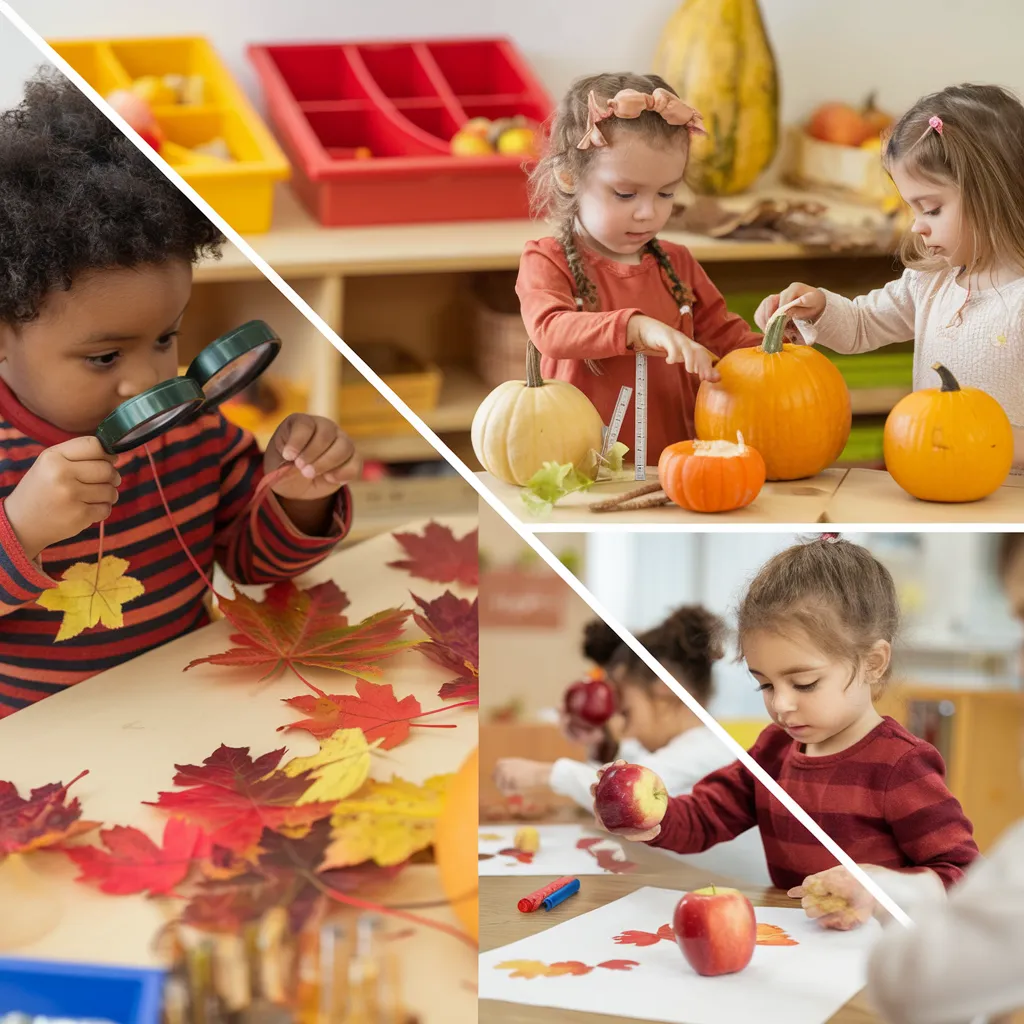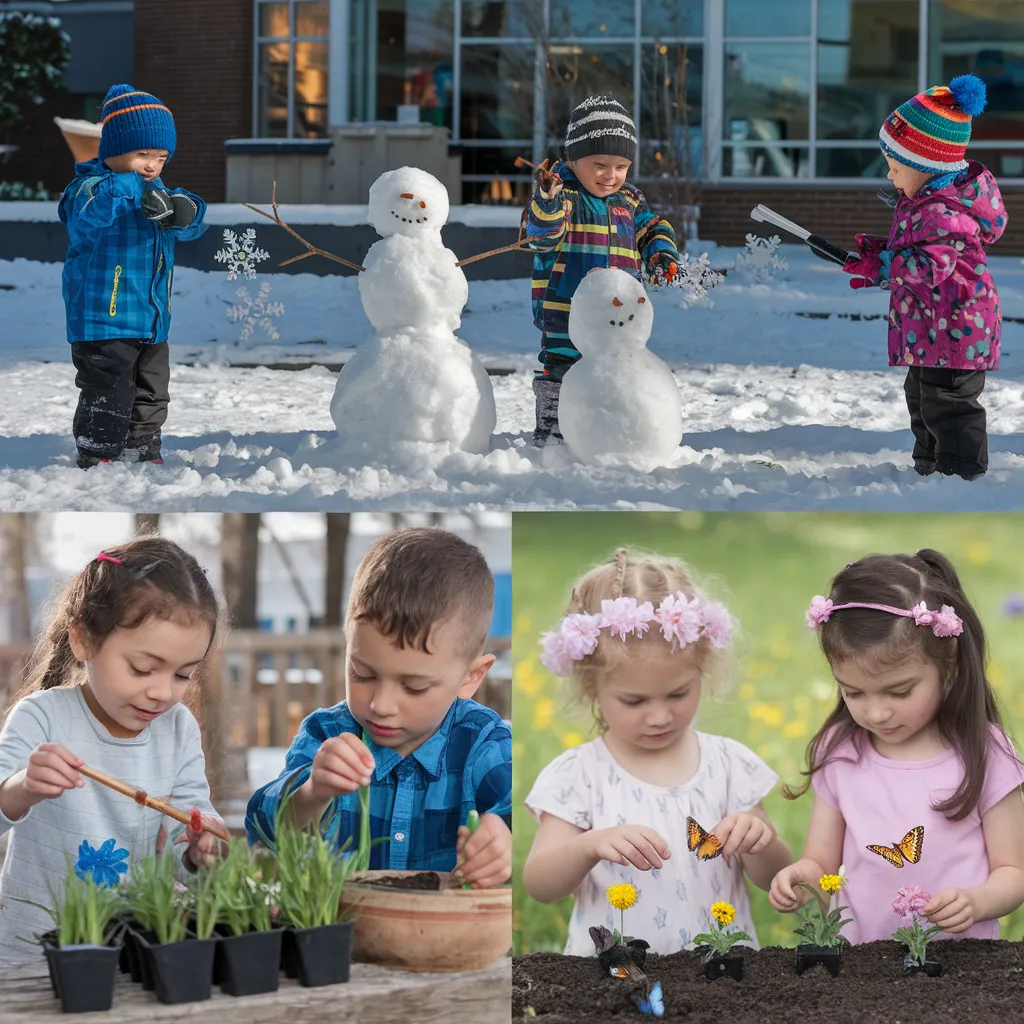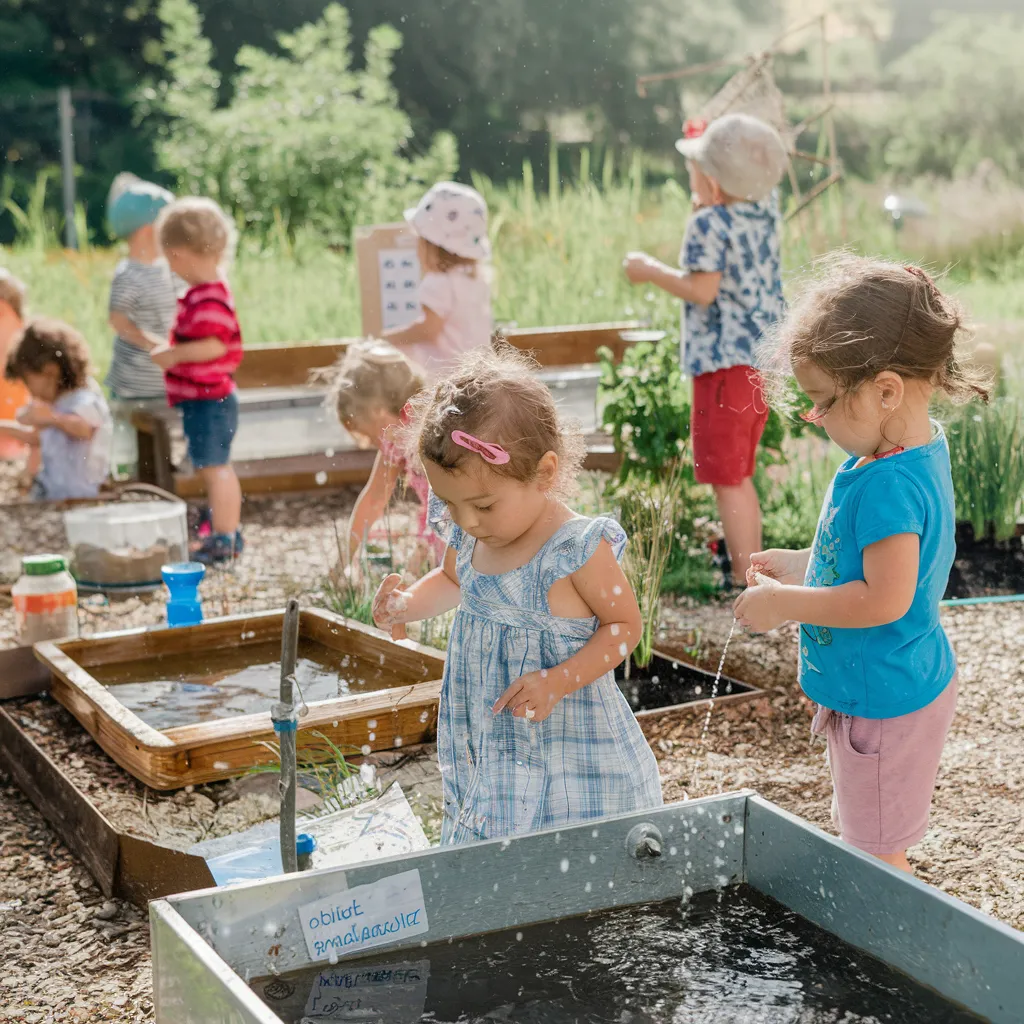Seasonal preschool activities create the perfect framework for engaging young learners in meaningful experiences that connect them to the natural world. These timely, relevant learning opportunities harness children’s natural excitement about changing seasons and special occasions, transforming ordinary lessons into memorable adventures. Whether you’re a teacher planning your classroom curriculum or a parent seeking home enrichment ideas, seasonal preschool activities offer endless possibilities for developing essential skills while celebrating the unique character of each time of year. From autumn nature explorations to summer water play, these seasonally-appropriate experiences build vocabulary, support cognitive connections, and create joyful learning moments that children eagerly anticipate.

Benefits of Incorporating Seasonal Preschool Activities
Seasonal preschool activities offer distinct advantages beyond their immediate appeal:
Developmental Advantages
- Concrete concept building: Abstract concepts become tangible through seasonal connections
- Vocabulary expansion: Season-specific terms naturally enter children’s lexicon
- Pattern recognition: Children observe and predict cyclical changes
- Time awareness: Understanding of temporal sequences develops through seasonal progression
- Memory development: Experiences tied to seasons create stronger recall connections
Engagement Benefits
- Natural curiosity activation: Children are intrinsically interested in seasonal changes
- Heightened sensory awareness: Each season offers unique sensory experiences
- Increased motivation: Seasonal novelty refreshes interest in learning
- Family connection opportunities: Shared seasonal experiences build home-school bridges
- Cultural relevance: Seasonal activities connect to children’s lived experiences
Autumn Seasonal Preschool Activities
Fall offers rich sensory experiences and abundant natural materials:
Outdoor Autumn Seasonal Preschool Activities
- Leaf Collection Expeditions
- Create sorting activities by color, shape, and size
- Press leaves for art projects and science observation
- Go on « leaf hunts » to find specific types or colors
- Make leaf rubbings to study venation patterns
- Pumpkin Investigations
- Weigh, measure, and compare different pumpkins
- Count and examine seeds for math connections
- Conduct simple sink/float experiments
- Create pumpkin life cycle sequencing activities
- Apple Exploration Stations
- Set up taste tests comparing different varieties
- Make apple prints using halved apples and paint
- Create graphing activities about preferences and observations
- Explore the parts of an apple through guided dissection
Indoor Autumn Seasonal Preschool Activities

- Fall Sensory Bins
- Fill with colored rice, mini pumpkins, pinecones, and acorns
- Hide letter tiles for literacy connections
- Add measuring tools for volume exploration
- Include small rakes and scoops for fine motor practice
- Harvest Dramatic Play
- Create farmer’s market or apple orchard setups
- Provide baskets, play produce, and simple scales
- Add writing materials for making signs and lists
- Include dress-up items like aprons and hats
- Migration Learning Centers
- Make binocular crafts for bird watching
- Create maps showing animal migration patterns
- Set up small world play with migrating animals
- Provide field guides with pictures of local birds
Winter Seasonal Preschool Activities
Cold weather brings unique learning opportunities indoors and out:
Science-Based Winter Seasonal Preschool Activities
- Snow and Ice Experiments
- Compare melting rates under different conditions
- Create crystal growing activities
- Explore animal tracks in snow or prepared trays
- Investigate freezing times of different liquids
- Light and Shadow Investigations
- Create shadow puppet theaters
- Use flashlights and objects to explore shadow size
- Make sun catchers for window displays
- Compare daylight hours using simple charts
- Hibernation Studies
- Create cave dramatic play areas
- Sort animals by hibernation behaviors
- Build model dens and burrows
- Read and act out hibernation stories
Creative Winter Seasonal Preschool Activities

- Indoor Snow Alternatives
- Use shaving cream for sensory play
- Create « snow » from baking soda and conditioner
- Provide cotton balls for craft snow
- Mix cornstarch and water for moldable material
- Winter Art Explorations
- Paint with ice cubes tinted with food coloring
- Create coffee filter snowflakes
- Make pine cone bird feeders with peanut butter and seeds
- Design winter landscapes with white paint on dark paper
- Cozy Literacy Corners
- Create blanket forts for winter reading spaces
- Offer seasonal vocabulary word cards
- Provide winter-themed story prompts
- Make flannel board story sets with winter characters
Spring Seasonal Preschool Activities
New growth and renewal inspire vibrant learning experiences:
Growth-Focused Spring Seasonal Preschool Activities
- Seed Planting Projects
- Create transparent seed viewers with paper towels
- Plant bean seeds in clear cups to observe root development
- Design and plant small container gardens
- Document growth through observational drawing
- Insect Investigations
- Set up butterfly life cycle observation kits
- Create magnifying stations for examining insects
- Build simple bug hotels for outdoor observation
- Make comparison charts of different insects
- Weather Observation Stations
- Create rain gauges from plastic bottles
- Make wind socks to observe direction and intensity
- Use chalk to mark shadow positions throughout the day
- Develop weather prediction and recording charts
Sensory Spring Seasonal Preschool Activities
- Mud Kitchen Explorations
- Provide tools for digging, mixing, and pouring
- Add natural items like sticks, pebbles, and flowers
- Include muffin tins and containers for « baking »
- Offer laminated recipe cards for dramatic play
- Flower Sensory Bins
- Include artificial flowers for sorting by color
- Add tweezers for fine motor development
- Provide small watering cans and spray bottles
- Include flower pots and garden tools
- Rain-Themed Water Play
- Create indoor « puddle jumping » in shallow trays
- Offer raincoats and boots for dramatic play
- Provide droppers and tubes for water transfer
- Set up rain drum stations with different surfaces
Summer Seasonal Preschool Activities
Warm weather offers abundant outdoor learning possibilities:
Water-Based Summer Seasonal Preschool Activities
- Evaporation Investigations
- Paint with water on hot sidewalks
- Compare evaporation rates in sun versus shade
- Create water cycle models in clear containers
- Develop prediction charts for disappearing puddles
- Ocean and Beach Explorations
- Create sand writing trays
- Set up shell sorting and classification centers
- Develop water movement investigations with simple tools
- Build ocean sensory bottles with oil, water, and blue coloring
- Cooling Experiments
- Test different materials as sun shelters
- Compare ice melting times with various insulators
- Create simple solar ovens with boxes and foil
- Investigate evaporative cooling with wet cloth
Outdoor Summer Seasonal Preschool Activities

- Nature Art Studios
- Create sidewalk chalk paint stations
- Develop nature weaving frames with sticks
- Set up flower pounding on fabric
- Offer sun print paper for leaf and object impressions
- Growing and Harvesting Projects
- Plant fast-growing vegetables like radishes
- Create simple salads from harvested items
- Develop taste-test comparisons of garden produce
- Set up herb sensory exploration stations
- Movement Challenges
- Create nature obstacle courses
- Develop shadow tag games
- Set up water transfer relay races
- Offer animal movement imitation activities
Conclusion
Seasonal preschool activities provide a natural, engaging framework for holistic learning that honors children’s innate connection to the rhythms of the year. By aligning educational experiences with the unique qualities of each season, teachers and parents can capitalize on children’s natural curiosity while building essential skills across all developmental domains. Start small by selecting just one or two seasonal preschool activities that connect to your current learning goals, gathering simple materials, and observing how children respond to these timely experiences. Remember that the most effective seasonal preschool activities balance careful teacher planning with room for child-led discovery and improvisation. As you build your repertoire of seasonal activities throughout the year, you’ll create not only valuable learning opportunities but also cherished traditions that children will anticipate with each returning season.
40 Engaging Holiday-Themed Worksheets That Make Learning Festive
FAQ
How can I modify seasonal preschool activities for different age groups?
For younger preschoolers (2-3 years), emphasize simple sensory experiences like touching fall leaves or splashing in summer water trays, with minimal steps and more adult support. For older preschoolers (4-5 years), extend activities with more complex questions, prediction elements, and multi-step processes. For example, a basic seed planting activity becomes more advanced when older children design experiments comparing growth conditions or create detailed documentation journals. Always consider attention spans, fine motor abilities, and conceptual understanding when adapting seasonal activities for different developmental stages.
What if I live in a region without distinct seasons?
Focus on subtle seasonal changes that do occur in your region, such as changes in wildlife activity, slight temperature variations, or shifting rainfall patterns. Incorporate cultural seasonal markers like local harvest times or regional celebrations. You can also introduce seasons conceptually through books, photos, and videos, while explaining that different places experience seasons differently. Create simulated seasonal experiences through sensory bins, art projects, and dramatic play that represent seasonal characteristics children might not experience directly in your climate.
How do I build a collection of seasonal materials without breaking my budget?
Develop a year-round collection strategy by purchasing seasonal items during post-holiday clearance sales and storing them for the following year. Focus on versatile natural materials like pinecones, shells, and stones that can be gathered for free and used in multiple ways. Create a parent donation system for seasonal items like seed catalogs, beach toys, or fall leaves. Invest in a few high-quality seasonal prop boxes that can be reused year after year. Remember that many effective seasonal preschool activities require minimal specialized materials—often everyday items and natural elements create the most engaging experiences.
How can I connect seasonal preschool activities to academic learning goals?
Incorporate intentional skill development within seasonal contexts by adding counting elements to pumpkin explorations, letter recognition to spring flower activities, or measurement concepts to summer water play. Create documentation methods that incorporate writing and drawing skills. Develop vocabulary word cards specific to each season’s activities. Use seasonal literature as a foundation for literacy connections. The key is first identifying your learning objectives, then finding natural ways to embed them within authentic seasonal experiences rather than forcing academic elements into otherwise playful activities.
How do I balance planned seasonal preschool activities with flexibility for child interests?
Plan a framework of seasonal activities but remain responsive to children’s emerging questions and observations. For example, a planned spring seed planting might evolve into an extended investigation of worms if children become fascinated with those discovered in the soil. Prepare materials for your intended activities but allow for open-ended use. Document children’s seasonal interests through photos and transcribed comments to inform future planning. Consider offering seasonal provocations—carefully arranged materials that suggest possibilities without prescribing outcomes—allowing children to lead their seasonal explorations while you support and extend their discoveries.
